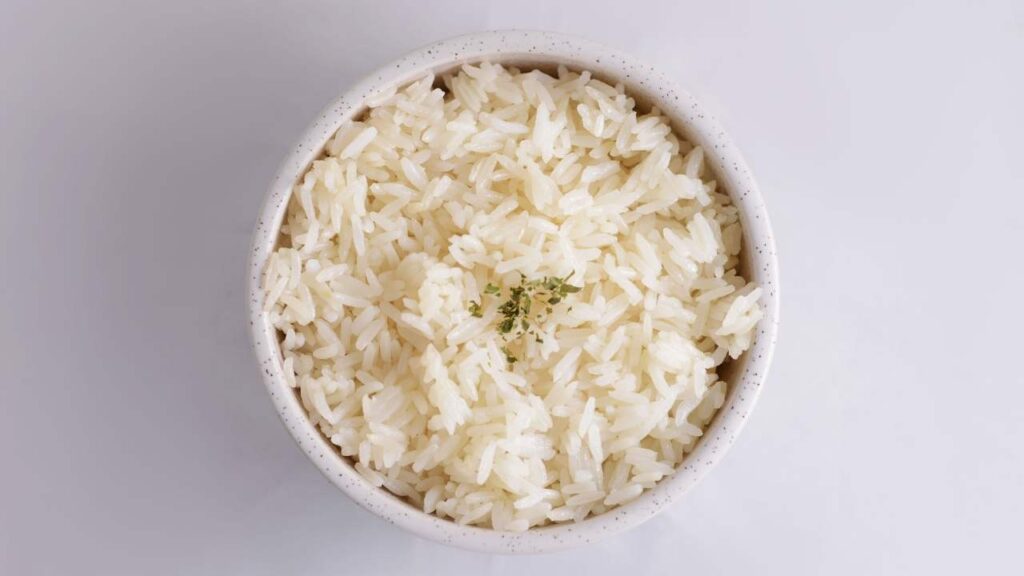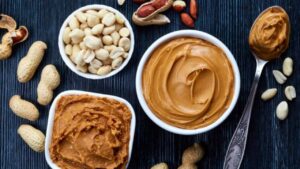Rice is a stable carbohydrate that is eaten all over. It’s been a versatile grain for ages. It’s usually avoided in the diet as it’s a source of carbs. But people do forget that carbs are even important for the body as they act as energy reserves. Some people believe that rice can make them fat. Let’s find out if Is rice fattening or not? Also, we will see kinds of rice that help in weight loss.
What is rice made of?
Rice is a whole grain that has 3 major components that are bran, germ, and endosperm. When rice is ground enough there is a loss of essential nutrients. The refining process helps to increase the shelf life of the product with added taste and flavor.
In brown and wild rice the bran layer and germ are intact together. This makes them nutritious and healthy. Brown rice is a rich source of fiber as the germ and bran layer is not removed. On other hand, talking white rice in which the germ part is removed is nutritious in nature. This strips off most of the nutrients making it a poor source.
The nutritional quality of different types of rice is different which has different benefits to the body. Overall, whole grains are also a rich source of other minerals like magnesium, phosphorus, selenium, iron, folate, and thiamine.
Nutritional value of rice per 100 grams
| Calories | 130 calories |
| Protein | 2.7 grams |
| Total fat | 0.3 grams |
| Cholesterol | 0mg |
| Total carbs | 28 grams |
| Dietary fiber | 0.4 grams |
| Sugars | 0.1 grams |
| Potassium | 35mg |
Rice Macronutrient info
Calories
The calorie content in 158 grams of rice which is equal to one cup gives about 206 calories. Like so, 30 grams of rice gives about 39 calories and two cups of rice give about 412 calories. A Rice cup which weighs around 100 grams gives 130 calories.
Carbs
Due to the carbs in it, many people think eating rice leads to fattening. Most carbs are present in form of starch. Sticky rice is low in amylose and amylopectin which makes them sticky. Basmati rice is rich in amylose. Due to this starch, it doesn’t stick together.
Fiber
Brown rice has high dietary fiber (1.1 gm per 100 gm) than compared with white rice (0.4 gm fiber per 100 gm). Brown and white rice contain variable amounts of soluble starch known as resistant starch.
Kinds of rice
1. White rice
White rice is a poor source of fiber and fewer nutrients as it undergoes a refining process. It is entirely a source of carbs which are present in the form of starch and glucose. The fiber content in white rice is 0.9 grams and carbs are about 26 grams per 100 grams value.
2. Red rice
Red rice is known for its nutritional properties It contains a red pigment that is naturally present in it giving it a desirable color. Its produced after the fermentation of Monascus purpureus mold, hence named red yeast rice. This rice is formed by the breakdown of red yeast and mainly consists of starch and protein in it. This red yeast rice helps to lower cholesterol in the body. The red color is developed due to the presence of a pigment known as anthocyanin. Anthocyanins have amazing antioxidant properties which help in lowering cholesterol levels. When compared with brown and white rice, red rice is nutritious and a healthy option to opt for. Apart from cholesterol-lowering, this rice also reduces inflammation in the body and maintains brain health too.
3. Brown rice
When compared with white rice, brown rice has higher fiber, vitamins, and minerals. Diabetic people should include them in their diet as they can control the glycemic load. The presence of dietary fiber in brown rice helps to reduce bad cholesterol in the body which is an indicator of heart diseases. Moreover, foods rich in fiber help us to keep us full for a long and are ideal for weight management too.
Is white rice good for weight loss?
As we all know, white rice undergoes polishing which strips off nutrients from it. Hence during polishing nutritious part is removed from it making it lack vitamins and minerals. However, it’s a conflicting point for many researchers whether white rice helps in weight loss. The answer is white rice is neither favorable nor harmful for weight loss. Due to the carbs in it, many people think eating rice leads to fattening and weight gain.
Rules to be included in a diet.
- Correct portion control will never make you fat if you consume white rice.
- The amount of rice you are consuming depends upon the lifestyle you are leading. For example sedentary, moderate or inactive.
- Healthy ingredients can be mixed with it in order to enhance its nutritional value.
White Rice Enrichment
As white rice doesn’t contain much of vitamins and minerals, it doesn’t mean that it should be completely excluded from the diet. White rice can be made more healthy by enriching it. Enrichment helps to add vitamins and minerals that were lost during the process of refining. Instead, the preparation of enriched white rice makes it a healthy option to consume. The lost replenishment makes white rice more nutritious.
Enrichment helps to add vitamins and minerals such as iron, niacin, and folic acid. There is no clear evidence that white rice helps in weight gain. The nutritional value of white rice is weak enough. The calories in white rice are named “empty calories”. Empty calories are those which are neither beneficial nor cause any harm to the body.
Is brown rice good for weight loss?
Brown rice undergoes the least processing which makes it nutritious in nature. When trying to lose weight, dieticians or health professionals recommend the intake of brown rice as its low in carb content. The fiber value is also good. Being low in calories, brown rice helps to burn extra fat from the body.
Brown rice helps in weight loss due to the presence of fiber in it. Fiber helps to manage bowel movements finely and keeps the digestive system in the tract. Brown rice is also a storehouse of iron, potassium, and other vitamins and minerals. Those who intake brown rice in their diet weigh less and have less risk of weight gain in the future.
Brown rice health benefits
- According to American Heart Association, brown rice is a good source of fiber. Fiber helps to provide improved digestion and keeps the digestive system in the tract.
- Cholesterol levels can be reduced in the body which helps to reduce the risk of heart diseases and stroke.
- Brown rice provides fewer calories and helps to make us feel full due to its high fiber content. As it provides fewer calories, weight management becomes quite easy. also know Calorie Calculator
- Brown rice is jam-packed with many vitamins and minerals which are essential to carry out immune, thyroid, and bone functions in the body.
Is rice fattening?
Rice is a staple food known to provide carbs to the body. Rice gives energy to the body. But there is a common saying which says “ Anything in excess could be dangerous to the body”. Same way if rice is eaten in more than recommended amounts it could lead to fattening.
Every person’s body has its own requirement. Rice consumed in required amounts can helps to maintain body weight and prevent obesity. A person’s body will not face any sort of harm when the recommended intake value is maintained. The problems of being obese, the risk of being diabetic, and cardiovascular diseases are commonly faced due to excess consumption of rice.
The caloric level in the diet is even more enhanced when white rice is mixed with fat-loaded curries. This lead to weight gain. Therefore, rice alone will not make a person fat. It’s the combination of foods that are taken into the diet as a part of the routine that is important.
Ways to eat rice while practicing weight loss
1. Practice portion control
Rice intake in excess can lead to fattening. Portion control is the base to control calorie requirements while having rice in diets. When rice is taken at a meal, calories should be restricted from other carbs sources in the same meal. Even while practicing a low-calorie diet, portion control of the rice should be carried and carbs should be skipped from before and after meals.
2. Pair with lots of veggies
Since white rice lacks fiber it can make you feel more hungry than other carbs taken. This can be avoided when rice is taken along with fiber-rich vegetables. Veggies can be included in form of roasted or grilled ones.
3. Choose low-calorie cooking methods
Do not make the rice preparations too rich by adding extra calories while preparing. Boiling is the best way rather than cooking it in cream or any other fat-based stuff.
Rice and Glycaemic index score
GI is the glycaemic score which measures how quickly foods help to rise blood sugar levels. Foods that are high on glycaemic score help to shoot up blood sugar levels. A shoot in blood sugar levels helps to increase the risk of being diabetic and leads to weight gain. On other hand, which have a low GI score increase blood sugar levels on a gradual basis. Low GI foods are beneficial for diabetic people as they can manage blood sugar levels and don’t cause a spike in insulin levels too.
Talking about whole grains, their GI score is low enough when compared with those of refined grains. Due to this reason, refined grains are avoided in the diet of those who are at risk of being diabetic. However, much link was not found between the consumption of refined grains and the risk of being diabetic.
The GI score in rice can vary depending upon the variety and the type which is selected for eating. On the whole, regardless of any kind of rice, its GI value can range from low to very high. This can be explained as such.
Rice which is sticky in nature contains more starch called amylopectin. The GI value is high in it. hence it’s rapidly digested in the body which causes blood sugar to spike quickly. On other hand, rice that is not sticky enough has a low range of GI. This low GI helps to slow down the digestion of starch. Even it may also contain resistant starch in it which is a healthy fiber for the body.
Rice diet
A popular weight loss diet known as the white rice diet has evolved in 1939. This diet was popular enough and help to treat people with kidney problems and high blood pressure. This diet was ultra-low in fat and contains rice as its hero ingredient.
The nature of this diet was bland and low caloric in nature. This diet mainly consisted of white rice, fruits, fruit juice, and sugars in it. But being so restrictive, this diet has many positive health benefits including weight loss. Apart from weight loss, those who suffer from kidney problems were even relieved following this diet.
As being a low restrictive and low-calorie diet it didn’t continue much as eating rice was a typical rule in this diet. Hence rice can be incorporated into the weight loss journey if calories are managed enough.
Rice and obesity
Rice is a staple food in many countries. Even though being stapled enough, the percentage of overweight, obesity and fattening levels are relatively lower among people. Those countries which have rice as its predominant source of carbs are Asians. According to estimation, 90% of Asian countries produce rice in the world.
In such populations where rice is taken in almost every meal have no problems with fattening and high blood pressure. The Chinese have a dietary pattern such that they intake rice and vegetables in their diet which prevents weight gain and obesity issues.
However, this trend is being changed and mostly the diets are being influenced by western diets. Due to this reason, the number of people who are overweight and obese has increased greatly in many countries. Due to this, people became many alerts and replaced rice with whole grains such as brown rice.
In a study conducted on Iranian adolescents, those who had the highest rice intake have got a greater association with being overweight and obese. Apart from obesity, their nutritional status is also poor when compared with recommended intakes.
Therefore, rice can make you gain weight if it’s taken in more than the required quantities and can contribute to a less nutritious diet. However, if eaten in required quantities it can remain a part of a balanced diet. Therefore, in order to avoid fattening while having rice practice portion control.






